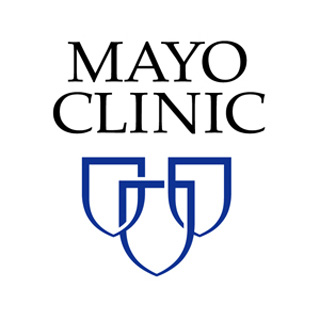Understanding the Pathophysiology and Effects of Diaphragmatic Breathing in Upright Gastroesophageal Reflux
| Status: | Recruiting |
|---|---|
| Conditions: | Gastroesophageal Reflux Disease |
| Therapuetic Areas: | Gastroenterology |
| Healthy: | No |
| Age Range: | 18 - Any |
| Updated: | 8/18/2018 |
| Start Date: | March 6, 2017 |
| End Date: | July 2019 |
| Contact: | Debra M. Geno, CRC |
| Email: | geno.debra@mayo.edu |
| Phone: | 507-538-0367 |
This study aims to understand why patients have predominantly upright gastroesophageal reflux
disease by comparing such patients to healthy persons AND whether a behavioral intervention
(diaphragmatic breathing) will impact this disease
disease by comparing such patients to healthy persons AND whether a behavioral intervention
(diaphragmatic breathing) will impact this disease
There are two major patterns of gastroesophageal reflux disease (GERD), predominantly daytime
and upright reflux and predominantly nocturnal and supine reflux.
Traditionally, upright reflux has been attributed to more frequent or wider opening with
transient lower esophageal sphincter relaxations (TLESRs) while supine reflux results from a
consistently reduced lower esophageal sphincter (LES) pressure. This may further be accounted
for by the finding of larger hiatal hernias and greater pressure gradients between the crura
and LES when comparing supine to upright refluxers. These findings may help explain supine
reflux, but they offer little insight into the mechanisms of upright reflux.
In this study the investigators will be recruiting twenty healthy persons and up to 60
patients with GERD will be recruited from the clinical practice at Mayo Clinic Rochester. The
investigators aim to study the intervention on 40 patients with GERD. However, recognizing
that up to 33% of patients with typical symptoms of GERD will not have reflux by ambulatory
pH monitoring (pH power of hydration), the investigators provide for enrolling up to a
maximum of 60 patients which should be sufficient to yield 40 patients with upright GERD by
pH monitoring. In addition, up to 10 additional healthy persons may be recruited.
Subjects with upright reflux and healthy controls will be randomized into one of two groups:
Experimental: Diaphragmatic breathing or Sham comparator: (listening to music/watching
Television (TV) for 30 minutes after each meal to see how this impacts the disease.
and upright reflux and predominantly nocturnal and supine reflux.
Traditionally, upright reflux has been attributed to more frequent or wider opening with
transient lower esophageal sphincter relaxations (TLESRs) while supine reflux results from a
consistently reduced lower esophageal sphincter (LES) pressure. This may further be accounted
for by the finding of larger hiatal hernias and greater pressure gradients between the crura
and LES when comparing supine to upright refluxers. These findings may help explain supine
reflux, but they offer little insight into the mechanisms of upright reflux.
In this study the investigators will be recruiting twenty healthy persons and up to 60
patients with GERD will be recruited from the clinical practice at Mayo Clinic Rochester. The
investigators aim to study the intervention on 40 patients with GERD. However, recognizing
that up to 33% of patients with typical symptoms of GERD will not have reflux by ambulatory
pH monitoring (pH power of hydration), the investigators provide for enrolling up to a
maximum of 60 patients which should be sufficient to yield 40 patients with upright GERD by
pH monitoring. In addition, up to 10 additional healthy persons may be recruited.
Subjects with upright reflux and healthy controls will be randomized into one of two groups:
Experimental: Diaphragmatic breathing or Sham comparator: (listening to music/watching
Television (TV) for 30 minutes after each meal to see how this impacts the disease.
Inclusion Criteria for Healthy Persons:
-Patients 18 years of age or older with no symptoms of GERD
Inclusion Criteria for Patients:
- Patients 18 years of age or older with symptoms of GERD
- Upper gastrointestinal endoscopy within the past 6 months and a prior diagnostic pH
impedance study showing predominantly upright reflux
Exclusion Criteria for Patients; Items indicated with an asterisk (*) are also exclusion
criteria for healthy persons
- Patient who fulfil ROME IV Criteria for rumination disorder20
- Clinical evidence of significant cardiovascular, respiratory, renal, hepatic,
gastrointestinal, hematological, neurological (e.g., spinal cord injuries, dementia,
multiple sclerosis, Parkinson's disease), psychiatric or other disease that may
interfere with the objectives of the study and/or pose safety concerns.*
- Any prior gastric or esophageal surgery and significant intestinal or colonic
resection*
- Hiatal hernia measuring 3 cm or larger as assessed by endoscopic or radiological
studies
- Prior history of Los Angeles Grade C or D esophagitis, or esophageal stricture.
- Current use opioid analgesics or anticholinergic drugs.* We will permit low doses of
tricyclic antidepressants, nortriptyline (up to 50 mg/day) or amitriptyline (up to 25
mg/day) provided they were commenced 3 months prior to the screening period, calcium
channel or adrenergic1 antagonists
- Current use of proton pump inhibitors
- Known significant esophageal motor disorder (ie achalasia, aperistalsis, functional
obstruction, jackhammer, distal esophageal spasm)*
- Inability to read due to: blindness, cognitive dysfunction, or English language
illiteracy *
- Pregnant and lactating females *
Exclusion Criteria for Healthy Persons in addition to those marked with an Asterisk (*)
above
- Ongoing use of Proton Pump Inhibitors ( PPIs) or a history consistent with GE reflux
for 3 months or longer duration in past.
- Prior history of Los Angeles Grade B-D esophagitis
- Prior history of GERD on the basis of pH testing
We found this trial at
1
site
Mayo Clinic Rochester Mayo Clinic is a nonprofit worldwide leader in medical care, research and...
Click here to add this to my saved trials
